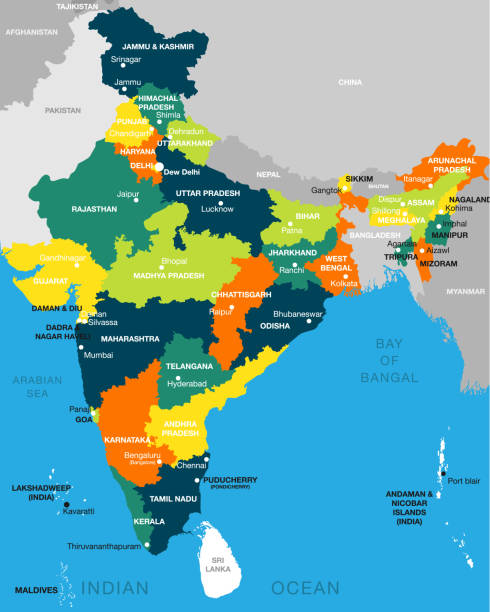The striking feature of the Indus Valley Civilization was?
Previous year paper ssc questions | cgl staff selection commission |multiple choice |questions and answers | gk questions in English
Prehistoric Period MCQ Question 3
Daily Online General Knowledge Quiz:Previous year paper gk questions with answers and explanation in English on Indus Valley Civilization and features of its important cities such as Harappa ,Mohanjodaro,Dholavira,Kalibangan,Rakhigarhi ,Ropar,Lothal,Chanhudaro,Surkotada,Banawali etc.
Q3. The striking feature of the Indus Valley Civilization was?
A. Urban Civilization
B. Agrarian Civilization
C. Palaeolithic civilization
D. Mesolithic Civilization
A. Urban Civilization
B. Agrarian Civilization
C. Palaeolithic civilization
D. Mesolithic Civilization
Urban Civilization
🔑Key Points
The Indus valley civilization is
also known as Harappan Civilization, was famous for its urban
civilization.
The most striking feature of the
Harappan cities is their town planning. The Harappan city was divided
into the upper town (also called the Citadel) and the lower town.
Their Urban planning included a
technical and political process concerned with the use of land and design of
the urban environment, baked brick houses, elaborate drainage systems, water
supply systems, clusters of large non-residential buildings.
The Indus river Valley Civilization,
3300-1300 BCE, also known as the Harappan Civilization, spread from today’s
North-East Afghanistan to Pakistan and North-West India.
This civilization flourished in the
river basins of the Indus and the Ghaggar-Hakra River.
The Indus Valley Civilization was a
Bronze Age civilization. The important inventions of bronze age civilization
include: standardized weights and measures, seal carving, and metallurgy
with copper, bronze, lead, and tin.
1.Harappa located in Sahiwal District, Punjab in the banks of Ravi which was excavated by Daya Ram Sahni in 1921.
2.Mohanjodaro located
in Larkana District Of Sind on the bank of Indus which was
excavated by R. D Banerjee in 1922
3.Dholavira located in Gujarat
in Rann of Kutchchh which was excavated by R S Bisht in 1985.
4.Kalibangan located in
Hanumangarh District, Rajasthan on the bank of Ghaggar river. The
site was discovered by Luigi Pio Tessitori, an Italian
Indologist and linguist. After Independence in 1952, Amlanand Ghosh
identified the site as part of Harappan Civilization and marked it
for excavation.
5. Rakhigarhi located
in Hisar district of Haryana which was excavated by Amarendra Nath
of Archaeological Survey of India.
Rakhigarhi is known as the largest
town of the Indus Valley Civilisation spread over 550 acres,
dating back to 4000 to 5500 years.
6.Rupar also known as Ropar
located in Punjab. Remains of that old civilisation were first seen in
independent India, in 1953.
7.Lothal located between the Sabarmati
river and its tributary Bhogavo near the Gulf of Cambay was excavated by S
R Rao.
8.Chanhudaro located in Mullan
Sandha, Sind on the Indus river which was excavated by N G
Majumdar in 1931.It is the only site without citadel.
9.Banawali located in
Fatehabad district of Haryana which was excavated by R S Bisht in
1974.
10.Surkotada located in Gujarat
which was excavated by J P Joshi in 1964.
11.Sutkagendor located in
southwestern Baluchistan province in Pakistan which was excavated
by Stein in 1929.
12.Amri located near Baluchistan,
on the bank of Indus river which was excavated by N G Majumdar
in 1935.
Important Findings of Harappa site are:
- Pottery.
- Chert blades.
- Copper or bronze implements.
- Terracotta figurines.
- Seals and sealing.
- Cubical Limestone weights.
- Faience Slag.
- Sandstone statues of Human anatomy.
- Bullock cart.
- Granaries.
- Coffin burials.
- Marine shells.
Important Findings of Mohenjo-Daro are:
- Many bronze and copper pieces such as figurines and
bowls.
- Furnaces.
- Dancing girl statue in Bronze.
- Seal of a man with deer.
- Elephants.
- Tiger and rhinos around- (Considered to be Pashupati
Seal).
- Steatite statue of beard man.
- Great bath.
- Granary.
- Bronze Buffalo.
- Unicorn Seals.
Important Findings of Kalibangan are:
- Ploughed field.
- a cylindrical seal.
- an incised terracotta cake.
- Camel’s bone.
- Copper Ox.
- Wooden plough.
- Evidence of earthquake.
- Wooden drainage.
- Lower fortified town.
- Fire alters.
- Furrowed land.
- Marine shells.
Important Findings of Lothal are:
- Dockyard
- Port Town
- Rice husk
- Fire alters
- Chess-playing
- Graveyard
- Ivory weight balance
- Copper dog
- First manmade port
Important Findings of Dholavira are:
- Rock – Cut architecture.
- Unique water harnessing system
- Dams.
- Embankments.
- Stadium.
- Exclusive water management
- Cascading series of giant water reservoir .
- Two multi-purpose grounds, one of which was used for
festivities and other as a marketplace.
- Nine gates with unique designs.
- Funerary architecture featuring tumulus — hemispherical
structures like the Buddhist Stupas.
- Cities built by stones instead of bricks.
Important
Findings of Surkotada site are:
- Bones of horses.
- Beads.
- Stone Covered Beads.
Important
Findings of Chanhudaro site are:
- The footprint of a dog chasing a cat.
- Cart with a seated driver.
- Bangle Factory.
- Ink Pot.
- Bead makers shop.
- Cotton cloth traces preserved on silver or bronze
objects.
Important
Findings of Banawali site are:
- The only city with radial streets.
- Toy plough.
- The largest number of barley grains.
- Beads.
- Barley.
- Oval shaped settlement surrounded by
massive brick defences.
- Marine shells.
Important Findings of Sutkagendor are:
- Stone Arrowheads.
- Shell Beads.
- Pottery.
- Bactria-Margiana Archaeological Complex (BMAC)
associated Copper-Bronze Disc.
- Trade point between Harappa and Babylon.
- Flint Blades.
- Stone Vessels.
Important Findings of Amri are:
- Antelope evidence.
- Rhinoceros’ evidence.
*This Question is a part of previous year paper gk questions on Prehistoric Period of India.
1.Indus script-wikipedia2.NCERT Text Books
More Questions on Pre-Historic Period of India


Comments
Post a Comment